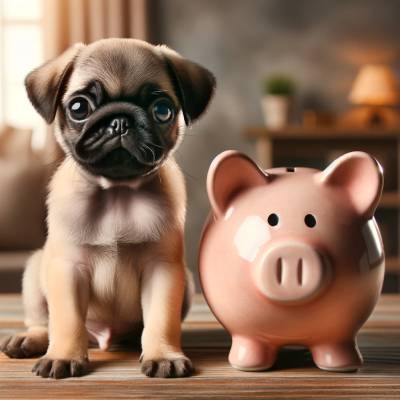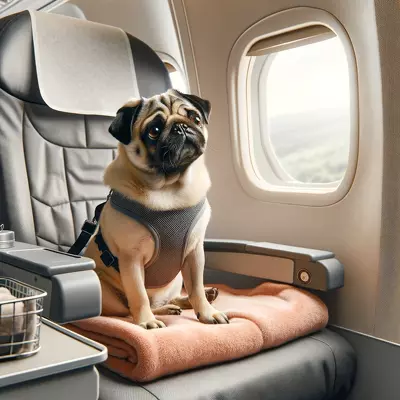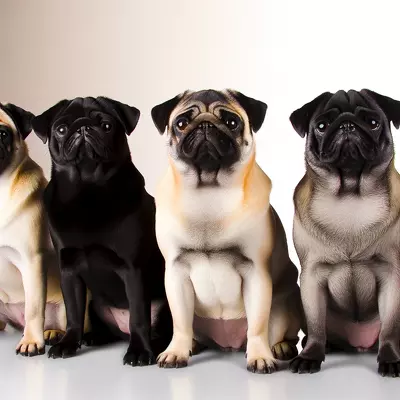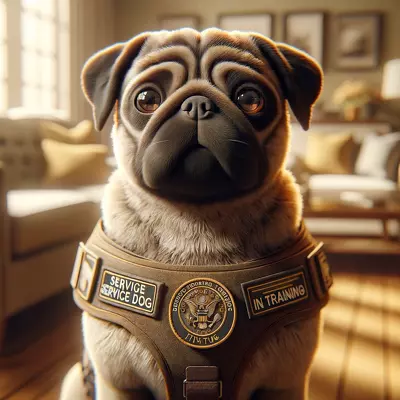A Deep Insight into How Much Baby Pugs Cost and What Makes Them Worth Every Cent

Exploring the world of pugs, a beloved dog breed known for their distinctive appearance and charming personalities leads many potential pet owners to consider the cost of owning one. These small, affectionate dogs have a unique set of needs, and their price can vary widely depending on various factors. Understanding these costs is crucial for anyone looking to welcome a baby pug into their home.
I. Introduction to Baby Pug Ownership
A. Overview of the Pug Breed
Pugs are a unique and ancient dog breed cherished for their compact size, distinctive wrinkled faces, and charming personalities. Originating from China, these dogs were bred to be companions and are known for their sociable and affectionate nature. Their small stature and expressive faces make them particularly popular among urban dwellers and families.
B. Popularity and Demand for Baby Pugs
The demand for baby pugs has surged in recent years thanks to their endearing qualities and suitability as indoor pets. Their popularity is also fueled by their appearances in media and celebrity endorsements, making them a sought-after breed. However, this increased demand often influences their market price and availability, leading potential owners to wonder about the cost implications of adopting a baby pug.
II. Factors Influencing the Cost of Baby Pugs
A. Breeder Reputation and Location
The cost of a baby pug can significantly vary depending on the breeder’s reputation and geographic location. Reputable breeders who invest in the health and well-being of their dogs tend to charge more. Additionally, prices can be higher in urban areas where the demand is greater.
B. Purebred vs. Mixed Breed Pugs
The distinction between purebred and mixed-breed pugs also affects price. Purebred pugs, with documented lineage and adherence to breed standards, are usually more expensive than mixed breeds. However, mixed breeds offer advantages in terms of health and temperament.
C. Health Screening and Vaccinations
Health screenings and vaccinations are crucial for the well-being of baby pugs. Breeders who conduct thorough health checks and provide initial vaccinations typically incorporate these costs into the price of the puppy, thus raising the overall cost.
III. Initial Costs of Owning a Baby Pug
A. Purchase Price
The purchase price of a baby pug can range widely. Factors like pedigree, breeder reputation, and geographic location play a significant role in determining this cost. Generally, potential owners should expect to pay anywhere from several hundred to a few thousand dollars for a baby pug.
B. Essential Supplies and Equipment
New owners will need to invest in essential supplies such as a bed, food and water bowls, a leash, and toys. These initial expenses can add up quickly, and it’s important to budget for these necessities when planning to bring a baby pug home.
C. Initial Veterinary Expenses
Initial veterinary expenses include vaccinations, deworming, and spaying or neutering. These are critical for the puppy’s health and can add a significant amount to the initial cost of ownership.
IV. Ongoing Expenses for Baby Pug Care
A. Food and Nutrition
Pugs require a balanced diet to maintain their health. The cost of high-quality dog food, treats, and any necessary dietary supplements should be considered in the ongoing expenses.
B. Grooming and Hygiene
Pugs need regular grooming due to their shedding coats and skin folds. Expenses for grooming tools or professional grooming services are recurring costs that owners need to budget for.
C. Health Care and Insurance
Regular veterinary check-ups, vaccinations, and possible health issues specific to pugs, like respiratory or joint problems, can lead to significant ongoing expenses. Pet insurance can help mitigate some of these costs, but it represents an additional monthly or annual expense.
V. Understanding the Total Cost of Ownership
A. Long-Term Financial Commitment
Owning a baby pug is a long-term financial commitment. Beyond the initial purchase and setup costs, ongoing expenses like food, grooming, and healthcare can add up over the pet’s lifetime.
B. Unexpected Costs
Owners should also be prepared for unexpected costs, such as emergency veterinary care. Setting aside a contingency fund can be a wise decision for unforeseen expenses.
C. Budgeting for a Baby Pug
Prospective pug owners should carefully consider and budget for both initial and ongoing costs. Planning for the total cost of ownership ensures that the pug receives the necessary care throughout its life.
In conclusion, while baby pugs are adorable and make wonderful companions, they come with significant financial responsibilities. From the initial cost of purchase to the ongoing expenses of care, owning a pug is a commitment that should be carefully considered. By understanding and preparing for these costs, you can ensure a happy, healthy, and fulfilling life for your new furry friend.
VI. FAQs
Q: How much does a baby pug typically cost?
A: The cost can range from a few hundred to several thousand dollars, depending on factors like breeder reputation, location, and whether the pug is purebred.
Q: What factors contribute to the cost of a baby pug?
A: Key factors include breeder reputation, geographic location, whether the pug is purebred or mixed, and costs related to health screenings and vaccinations.
Q: How much should I budget for initial expenses when getting a baby pug?
A: In addition to the purchase price, budget for essential supplies, initial veterinary expenses, and any necessary grooming tools, which can add several hundred dollars to the initial cost.
Q: What are the ongoing expenses of owning a baby pug?
A: Ongoing expenses include food, grooming, routine veterinary care, and potential health-related costs specific to pugs, such as for respiratory or joint issues.
Q: Are there any unexpected costs I should prepare for?
A: Yes, it’s wise to have a contingency fund for unexpected veterinary expenses, emergencies, or health issues that may arise.
Q: How long do pugs live?
A: Pugs typically live for 12-15 years, meaning a long-term financial and care commitment for owners.
Q: What is the cheapest dog breed?
A: Breeds like Beagles, Dachshunds, or Chihuahuas can be less expensive to purchase and maintain compared to pugs, but costs can vary based on individual circumstances.
VII. Conclusion: Is a Baby Pug the Right Pet for You?
A. Balancing Costs with the Joy of Pet Ownership
Owning a baby pug can be a rewarding experience, offering companionship and joy. However, it requires a careful balance of financial commitment and the ability to meet the pet’s needs.
B. Making an Informed Decision
Prospective owners should consider all aspects of pug ownership, including financial implications, to make an informed decision that ensures the well-being of both the pet and the family.
VIII. Suggested Readings
To further explore the responsibilities and joys of pet ownership, particularly of pugs, the following books are highly recommended. They provide insights into breed-specific care, training, and the overall experience of having a pet.
- “Pugs For Dummies” by Elaine Waldorf Gewirtz – A comprehensive guide to understanding and caring for pugs, covering everything from their personality traits to health issues.
- “The Complete Guide to Pugs” by David Anderson – An in-depth look at the pug breed, offering advice on training, grooming, and health care.
- “A Pug’s Guide to Etiquette” by Gemma Correll – A light-hearted and humorous book that delves into the quirky world of pugs and their unique behaviors.
- “Pug Handbook” by Brenda Belmonte – A detailed manual on raising, training, and caring for pugs, filled with practical tips and advice.
- “Living with a Pug” by Caroline Coile – This book provides real-life stories and experiences of pug owners, offering a personal perspective on the joys and challenges of pug ownership.
These books offer a wealth of knowledge for both current and prospective pug owners, helping to deepen understanding and appreciation of this unique breed. They are essential reads for anyone considering adding a pug to their family or looking to enhance their experience with their current pet.






